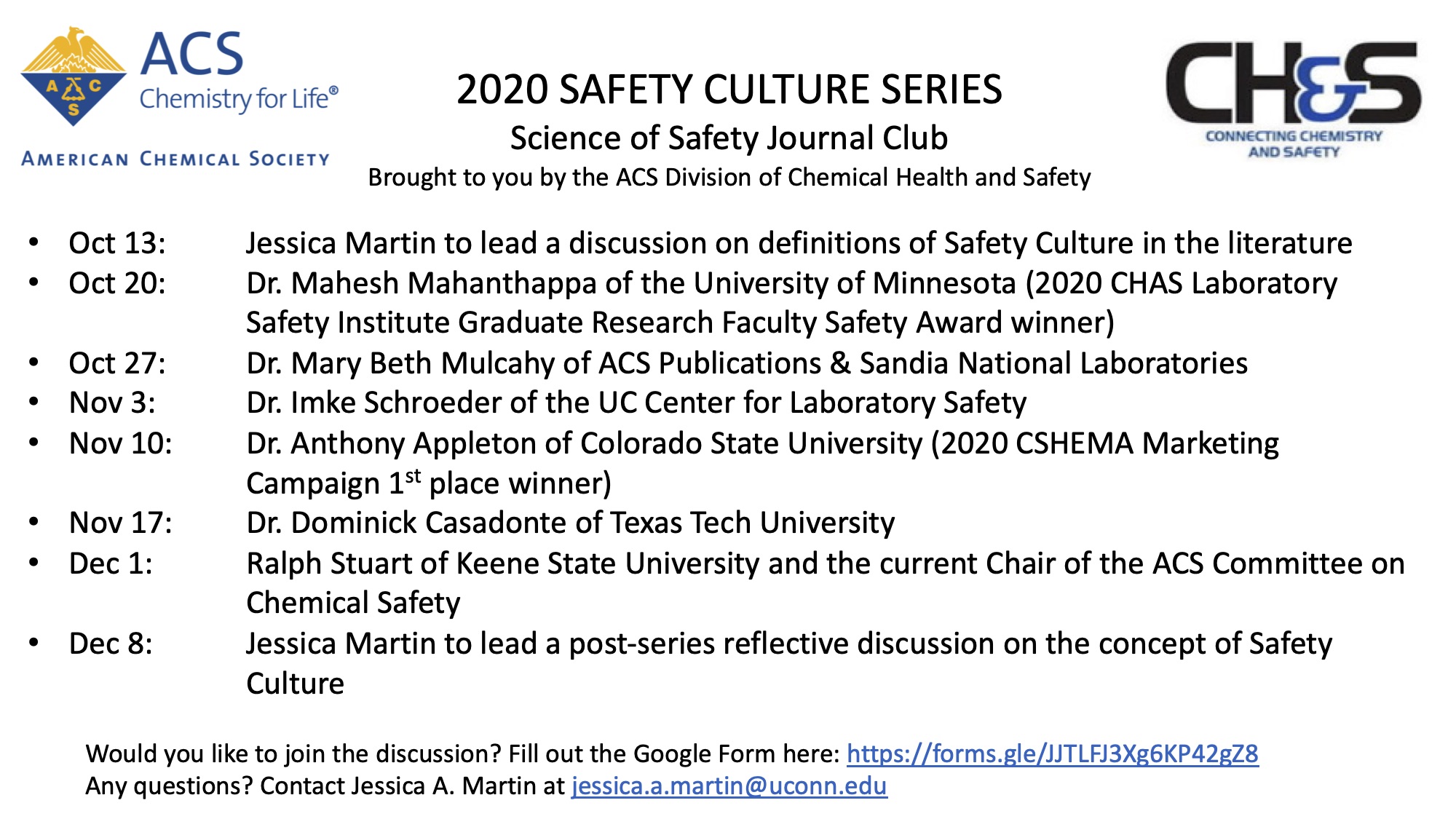Led by:
Jessica Martin
CONVERSATION HIGHLIGHTS
After Jessica A. Martin reviewed the document “Exploring Definitions of Safety Culture” (see link bel0w), Journal Club participants were asked to spend 5 minutes typing into the chat questions that came to mind when considering these definitions as well as considering the list of our upcoming discussion leaders. The questions shared are below.
Measuring Safety Culture
- Regardless of your definition, how do you measure “safety culture” with the goal of improving?
- Given that incident rates are relatively low and incidents themselves are typically not as dangerous in academia, what would a more positive safety culture look like in academia?
- What do we define as the “problems” in academia that makes us worry about the status of our Safety Culture?
- Do all of the actors identified within an academic safety culture identify the same problems? (i.e. do we all actually agree on what the problems are?)
- If culture is a combination of what we do/behaviors and what we think/believe, for safety culture do we only/mostly care about what people do/behaviors since it’s our actions that impact our outcomes (harmed or not)?
- In a safety survey, we can identify safety behaviors and awareness on a scale and provide actions. How do we quantify and change negative safety attitudes? What advice can we provide?
- Does safety culture really reduce incidents in the research setting? Where is the proof? Is it just an excuse to put every aspect of safety under one umbrella?
- To what extent do we need to measure it if we can adequately describe a group’s safety culture from inside and outside observations?
Defining Safety Culture
- How do you empower individuals (students, faculty, staff, etc.) to take personal responsibility for safety, while making sure adequate training is provided and demonstrated (best laboratory practices) to others in the lab?
- How has the COVID epidemic changed the safety culture of the USA? Have those changes been reflected in your organization?
- What other types of culture do we measure in an attempt to change the culture?
- What are the boundaries of an organizational culture? Are these the same boundaries as the safety culture of the organization?
- How many people does it take to have a culture?
- What are other concepts which have undergone a period of disagreement and then been resolved? How did they do that?
- How (and to what extent) can organizational culture and institutional management hierarchies influence positively academic laboratory safety culture?
- What are the other parent fields and what should we be drawing from them as the chemical health and safety field develops (ex. organizational psychology)?

